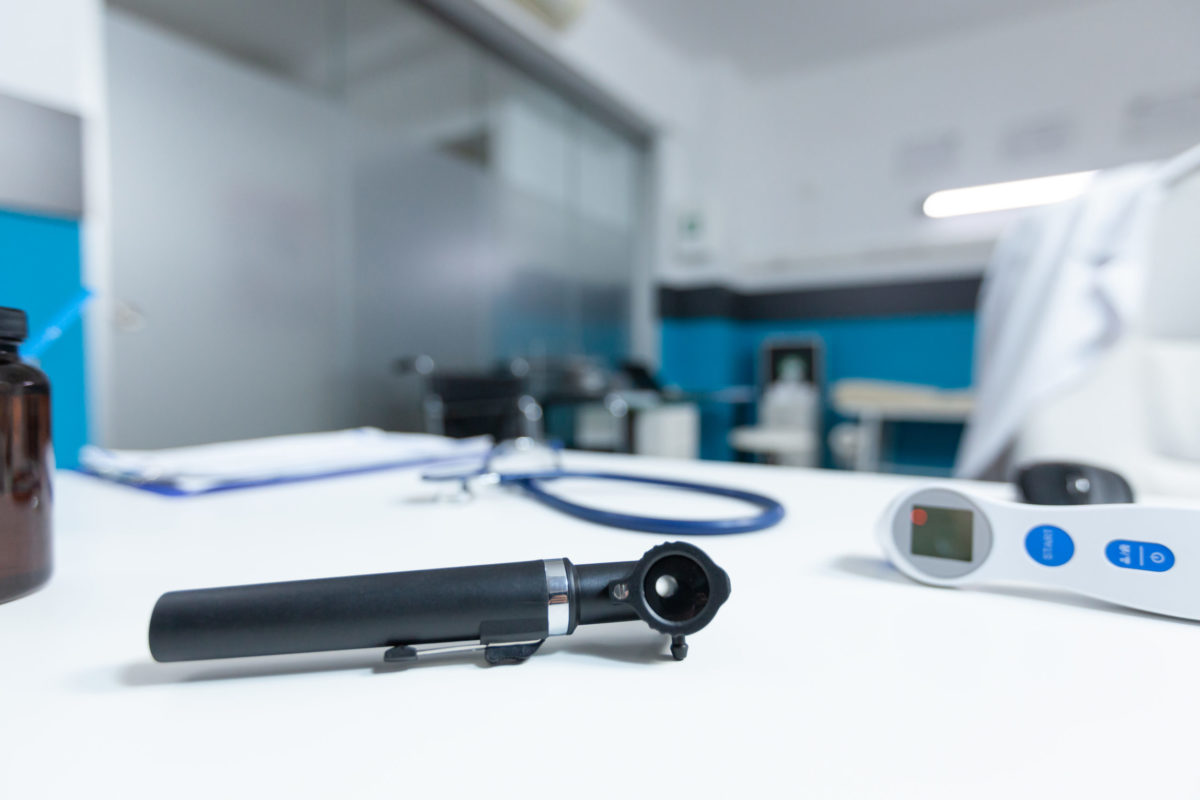In the medical field, aesthetics in the exam room sometimes isn’t a first consideration. However, the design and ambiance of an exam room play a crucial role in shaping the patient’s experience. According to recent research published in the National Library of Medicine, an aesthetic environment contributes to improved staff morale and patient care. The physical environment significantly impacts patients’ emotional well-being, comfort, and perception of quality of care. Let’s explore the importance of aesthetics in the exam room and how a well-designed space contributes to positive patient outcomes. Here are 5 ways exam room aesthetics can enhance the patient experience.

Creating a Calming Environment
Medical settings often induce anxiety in patients. Incorporating soothing and visually appealing elements into the exam room helps alleviate stress and create a calming environment. Soft lighting, complementary color schemes, and comfortable furniture contribute to a sense of tranquility, reducing patients’ apprehension.
Color schemes are essential in creating a calming environment in the exam room due to the profound psychological impact of colors on emotions and mood. Soft and cool colors like blues and greens evoke tranquility, reduce stress and nervousness, and promote visual comfort.
On the other hand, bright and playful colors can create a cheerful and friendly atmosphere, acting as distractions and making medical visits more enjoyable for children. Fun exam tables, wall-mounted activities, and wider side chairs so parents and children can sit next to each other may also help to relax children.
In addition, faux wood flooring can aid in creating a calming environment in the exam room through its warm and natural aesthetic, soft colors, and reduced glare. The material’s sound absorption properties also help decrease noise levels, fostering a peaceful atmosphere.
Faux wood elements can contribute to reducing a patient’s stress and anxiety by making the patient feel like they are in a home-like environment, enhancing the overall experience during medical visits.

Enhancing Patient Comfort
Designing the exam room with patient comfort in mind is essential. Ergonomic seating, ample legroom, and temperature control are factors that enhance patients’ physical comfort during their visit. Providing privacy curtains or dividers ensures a sense of security and personal space. When patients feel physically at ease, they relax and engage more effectively with healthcare providers, leading to improved communication and better healthcare outcomes.

Promoting a Positive Perception of Care
The appearance and ambiance of the exam room significantly influence patients’ perception of care quality. A clean, well-maintained, and aesthetically pleasing space conveys professionalism, attention to detail, and a commitment to patient well-being. Investing in the aesthetics of the exam room instills confidence and reassures patients that their care is of the utmost importance.

Supporting Healing and Recovery
A visually pleasing environment positively impacts patient healing and recovery. Nature-inspired artwork, greenery, or views of outdoor spaces establish a connection to nature, reducing stress and enhancing the healing process.
Incorporating art and design elements that evoke positivity, hope, and inspiration uplift patients’ spirits during challenging times. A thoughtfully designed exam room contributes to a holistic healing experience, addressing both physical and emotional well-being.
Artwork in the exam room supports healing and recovery by reducing stress and anxiety, providing a distraction from pain, and enhancing positive moods. Thoughtfully chosen artwork creates a pleasant environment, leading to improved patient experiences and satisfaction with medical visits. Certain art forms, like art therapy, can have therapeutic effects, offering emotional expression and relaxation. Healing-themed artwork fosters a positive mindset, while culturally relevant pieces promote comfort and empowerment. Overall, art contributes to the mind-body connection and encourages patients to take an active role in their healing journey, promoting a sense of control over their health and well-being.

Fostering a Positive Relationship with Healthcare Providers
The aesthetics of an exam room foster a positive and collaborative relationship between patients and healthcare providers. When patients feel comfortable and at ease in their surroundings, they are more likely to openly communicate concerns, ask questions, and actively participate in their care. A welcoming and aesthetically pleasing environment creates trust and encourages patients to view their healthcare providers as partners in their journey toward better health.
Providing a monitor in the exam room displaying positive messages can enhance communication, empower patients, and promote transparency. Visual aids and personalized information help patients pass the time, feel more involved in their healthcare decisions, and reduce anxiety during medical visits.
Exam room aesthetics can enhance the patient experience
Exam room aesthetics can enhance the patient experience by providing a visually appealing and patient-centered environment. This can positively impact a patient’s experience, emotional well-being, and perception of care. Beyond the clinical aspects, exam room aesthetics contribute to better communication, improved outcomes, and enhanced patient satisfaction. Recognizing the significance of aesthetics in healthcare settings allows for creating spaces that promote healing, comfort, and overall patient well-being.







